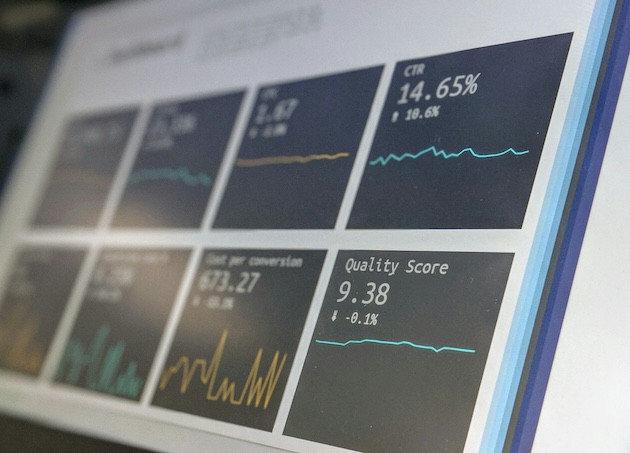In creative industries such as software development, the real secret to success lies in the team’s synergy. Thriving companies are built upon the strong foundation of collaborative efforts among team members. CTOs, CPOs and CHROs play a central role in fostering collaboration, trust, and innovation — crucial aspects of building synergy in software teams.
This article explores the nuances of building high-performing software teams, shedding light on often-overlooked aspects that significantly impact the bottom line:
How Team Synergy Impacts the Bottom Line

Aligning principles of deliberate action with concrete performance metrics is key to building profitable products.
Software companies often prioritize dedication and hours worked when building teams, but neglect ensuring team members are in the right headspace. Beyond dedication, true performance emerges when heart and passion align with the mission.
Imagine a Roman garrison—an enormous organization of tactical precision, optimized resources, and disciplined legionaries. Back then, success didn’t just happen; it was meticulously prepared. Drawing parallels, successful software teams mirror key principles:
- Gradual Skill Training: Legionaries underwent gradual mastering of the art of warfare over time, ensuring readiness for any challenge. Continuous skill enhancement is crucial in the fast-evolving landscape of software development. Ongoing training ensures teams are prepared for dynamic challenges.
- Standardization and Systematization: The Roman army’s penchant for standardization and systematization finds resonance in today’s software development practices. Standardizing coding conventions, adopting systematic workflows, and learning from external sources contribute to a cohesive development environment. Practical borrowing, copying, and adapting proven methodologies from the industry ensure efficiency and consistency in software development processes.
- Flexibility in Tactics and Methods: Just as the Roman legion remained flexible, software teams also benefit from agility. Adapting to changing project requirements, embracing new development methodologies, and staying open to innovative tools and technologies enable teams to navigate the dynamic landscape of software innovation effectively.
- Discipline and Trust: Legionaries operated with discipline and mutual trust. Likewise, software teams thrive when there’s discipline in processes and a foundation of trust among team members. It ensures smooth operations and effective collaboration.
- Institutional Loyalty: Legionaries were deeply loyal to their institution, fostering a sense of belonging and unity. It came from perks, recognition, and a sense of belonging to a prestigious institution (employer branding, anyone?). Nowadays, positive workplace culture, recognition, and perks continue to cultivate a sense of belonging among team members.
Connecting the Dots: From Principles to Profitable Product
Owners and executives aspiring to build profitable products must recognize that success is made, not given. Deliberate actions, particularly in team motivation and resource management, lay the foundation. Translating these principles into actionable measures ensures everyone delivers tangible results.
Software Team Performance Metrics: Navigating Beyond Effort Assessment
Aligning principles of deliberate action with concrete performance metrics is key to building profitable products. Shifting the focus to metrics influencing time to market and Achieved Annual Revenue (AAR) bridges success principles with measurable outcomes. Here, we adjust the lens to correlate how each KPI can be moved by interconnected teams.
Nice-to-knows (Metrics to Improve Routines)
Nice-to-know metrics are essential for understanding and refining day-to-day operations, helping teams optimize their processes for increased efficiency.
Must-measures (Metrics to Measure Results)
Must-measure metrics directly gauge the impact of development efforts, providing insights into the effectiveness of the team’s work.
Should-reports (Metrics to be Accountable and Let C-level Know You Are on the Right Track)
Should-reports metrics are crucial for showcasing the team’s accountability and aligning development efforts with broader business objectives.
By incorporating these performance metrics and understanding how team synergy influences each of them, leaders can guide teams to look beyond routine objectives.
Don’t Forget Invisible Work: Prioritizing Outcomes over Output
Undeniable portions of work remain unnoticed or invisible to other teams (and C-levels). Still, they are crucial in delivering successful products. Planning activities, documentation, and investigation play vital roles, fostering efficiency and aligning teams toward shared goals.
Passion and Mission Alignment: Driving Long-Term Innovation
Returning to the Roman analogy, the shared purpose within modern software companies is akin to Roman citizenship under arms. Passion and mission alignment create a sense of belonging and unity, cultivating a shared commitment to the company’s mission and values.
When team members share a common mission, it creates a unified sense of purpose that transcends individual tasks. This shared commitment fosters collaboration, creativity, and a resilient spirit necessary for overcoming challenges and driving innovation.
Leadership’s Role in Keeping Everyone’s Eyes on the North Star
The Chief Product Officer (CPO), Chief Technology Officer (CTO), and Chief Human Resources Officer (CHRO) play distinct yet interdependent roles in driving efficiency, high performance, and innovation in software teams. Let’s dive in.
How CPOs Lead the Team (and the Business) to Build Profitable Products by Shaping Hearts and Minds

For Chief Product Officers, fostering synergy within the product development team helps save time while crafting innovative and profitable products. Photo by Ian Harber
For Chief Product Officers, fostering synergy within the product development team helps save time while crafting innovative and profitable products. A tight-knit group will possibly be more willing to put forward fresh ideas, driving innovation.
Psychological safety in software teams is also important to train empathy—a key skill for interviewing users and other stakeholders while conceptualizing products and features that drive revenue.
Boosting Synergy in Product Teams
- Inspire a Unified Vision: Clearly articulate and communicate the overarching mission and vision of the product, aligning individual goals with the broader business objectives.
- Encourage Cross-Functional Collaboration: Break down silos between design, development, and marketing teams to ensure a holistic approach, fostering an environment where diverse perspectives contribute to product excellence.
- Recognition and Rewards: Implement recognition programs that celebrate both individual and team achievements, reinforcing a sense of accomplishment and shared success.
How CTOs Drive High Performance in Cost-Effective Engineering Teams, Without Sacrificing Morale

Chief Technology Officers play a crucial role in translating the product vision into actionable to-dos for engineering teams. Photo by Surface Photo by Surface
Chief Technology Officers play a crucial role in translating the product vision into actionable to-dos for engineering teams. When pitching and engaging software developers on the vision coming from the Product team, they instigate engineers to meet requirements in the smartest way possible.
Inviting engineers to reach the best results with the least amount of effort can enhance efficiency and ultimately contribute to cost-effective product development. Strong software team collaboration ensures streamlined processes, effective communication, and optimized resource utilization.
Boosting Synergy in Engineering Teams
- Invest in Continuous Learning: Facilitate ongoing training and skill development programs to keep the team abreast of emerging technologies, fostering a culture of continuous improvement.
- Transparent Communication: Establish open channels of communication to encourage the free exchange of ideas and insights, promoting a collaborative environment that values every team member’s input.
- Balance Workload and Recognition: Strive for an equitable distribution of workload, acknowledging and rewarding high-performing individuals to maintain motivation and morale.
How CHROs Support Software Teams and Their Leaders Toward Efficiency and Effectiveness

Chief Human Resources Officers optimize human capital within software teams. Photo by Windows
Chief Human Resources Officers optimize human capital within software teams. They support team-building efforts, skill development, and other practices that drive efficiency, job satisfaction, and overall organizational effectiveness.
Helping Software Teams Come Together
- Cultivate a Positive Work Culture: Foster a workplace culture that emphasizes collaboration, respect, and mutual support, creating an environment where employees feel valued and connected to the broader mission.
- Employee Well-Being Initiatives: Prioritize employee well-being by implementing initiatives that support work-life balance, mental health, and professional growth, ensuring a motivated and engaged software team.
In summary, effective leadership contributes to a workplace culture where every team member is aligned with the North Star—ultimately leading to profitability and sustained success.
Building Trust and Synergy in Software Teams: Ubiminds’ Comprehensive Approach
Ubiminds, renowned for tech recruiting, extends its impact to enhance trust, collaboration, and synergy within remote and distributed teams, specifically those in Latin American countries. We support software startups, SMBs, and IPOs with:
- Performance Enhancement for Long-Term Success: Regular one-on-one sessions and check-ins; Impact evaluation system; Career progression paths
- Remote Work Consulting: Distributed-Readiness Assessments, Brilliant People Acceleration Programme
- Retention Strategies with Thoughtful Perks and Benefits: Gym Membership; Health Insurance; Courses and Certifications; Meal Tickets; Performance Bonuses
- Through Engaging Events and Experiences: Care Baskets and Swag production and distribution; Collocated Work Events; Team Retreats
Connect with Ubiminds to learn more about how our approach ensures every team member feels valued, connected, and empowered for long-term success.

International Marketing Leader, specialized in tech. Proud to have built marketing and business generation structures for some of the fastest-growing SaaS companies on both sides of the Atlantic (UK, DACH, Iberia, LatAm, and NorthAm). Big fan of motherhood, world music, marketing, and backpacking. A little bit nerdy too!





